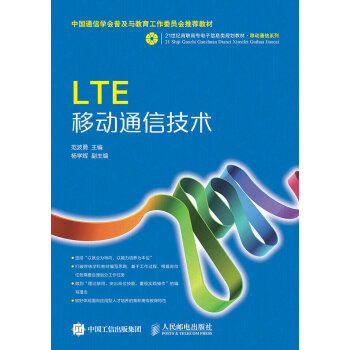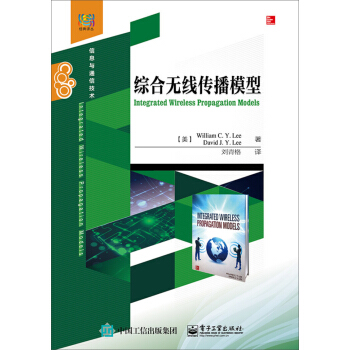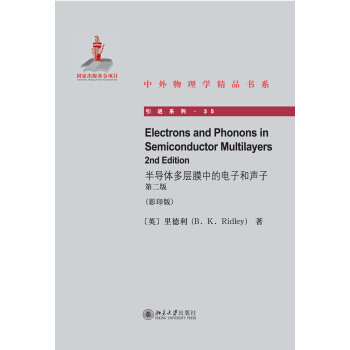

具体描述
編輯推薦
《半導體多層膜中的電子和聲子(第二版)(英文影印版)》是影印版英文專著,原書由劍橋大學齣版社於2009年齣版。半導體科學與技術是當代最重要的研究領域。因之催生的各種應用數不勝數。半導體多層膜則是納米技術發展的産物,具有重要的科研價值和巨大的應用潛力。本書作為研究其中電子和聲子的學術專著,一定會給這一領域的研究者以很大的收獲。內容簡介
納米技術的發展催生瞭隻有幾個分子厚度的半導體結構,這給該結構中電子和聲子的物理帶來瞭重要影響。《半導體多層膜中的電子和聲子(第二版)(英文影印版)》闡述瞭量子阱和量子綫中的電子和聲子囚禁對半導體特性的影響。第二版中加入瞭電子自鏇弛豫、六角縴鋅晶格、氮化物結構和太赫茲源等方麵的內容。本書獨特之處在於對光學聲子的微觀理論的闡述,其由囚禁引起的徑嚮性質改變以及與電子的相互作用等。本書適閤半導體物理領域的研究者和研究生閱讀。
作者簡介
(英) 裏德利(B. K. Ridley),英國埃塞剋斯大學教授。目錄
Preface page xiIntroduction 1
1 Simple Models of the Electron-Phonon Interaction 9
1.1 General Remarks 9
1.2 Early Models of Optical-Phonon Confinement 10
1.2.1 The Dielectric-Continuum (DC) Model 11
1.2.2 The Hydrodynamic (HD) Model 16
1.2.3 The Reformulated-Mode (RM) Model 18
1.2.4 Hybrid Modes 21
1.3 The Interaction of Electrons with Bulk Phonons 22
1.3.1 The Scattering Rate 22
1.3.2 The Coupling Coefficients 24
1.3.3 The Overlap Integral in 2D 27
1.3.4 The 2D Rates 29
1.3.5 The 1D Rates 34
1.4 The Interaction with Model Confined Phonons 35
2 Quantum Confinement of Carriers 42
2.1 The Effective-Mass Equation 42
2.1.1 Introduction 42
2.1.2 The Envelope-Function Equation 44
2.1.3 The Local Approximation 46
2.1.4 The Effective-Mass Approximation 48
2.2 The Confinement of Electrons 49
2.3 The Confinement of Holes 53
2.4 Angular Dependence of Matrix Elements 62
2.5 Non-Parabolicity 64
2.6 Band-Mixing 66
3 Quasi-Continuum Theory of Lattice Vibrations 67
3.1 Introduction 67
3.2 Linear-Chain Models 69
3.2.1 Bulk Solutions 69
3.2.2 Interface between Nearly Matched Media 71
3.2.3 Interface between Mismatched Media 75
3.2.4 Free Surface 75
3.2.5 Summary 76
3.3 The Envelope Function 76
3.4 Non-Local Operators 78
3.5 Acoustic and Optical Modes 80
3.6 Boundary Conditions 83
3.7 Interface Model 85
3.8 Summary 91
Appendix: The Local Approximation 94
4 Bulk Vibrational Modes in an Isotropic Continuum 97
4.1 Elasticity Theory 97
4.2 Polar Material 104
4.3 Polar Optical Waves 105
4.4 Energy Density 107
4.5 Two-Mode Alloys 114
5 Optical Modes in a Quantum Well 119
5.1 Non-Polar Material 119
5.2 Polar Material 122
5.3 Barrier Modes: Optical-Phonon Tunnelling 127
5.4 The Effect of Dispersion 137
5.5 Quantization of Hybrid Modes 137
6 Superlattice Modes 141
6.1 Superlattice Hybrids 141
6.2 Superlattice Dispersion 144
6.3 General Features 148
6.4 Interface Polaritons in a Superlattice 154
6.5 The Role of LO and TO Dispersion 155
6.6 Acoustic Phonons 157
7 Optical Modes in Various Structures 160
7.1 Introduction 160
7.2 Monolayers 160
7.2.1 Single Monolayer 162
7.2.2 Double Monolayer 166
7.3 Metal-Semiconductor Structures 170
7.4 Slab Modes 173
7.5 Quantum Wires 176
7.6 Quantum Dots 181
8 Electron-Optical Phonon Interaction in a Quantum Well 182
8.1 Introduction 182
8.2 Scattering Rate 183
8.3 Scattering Potentials for Hybrids 184
8.4 Matrix Elements for an Indefinitely Deep Well 185
8.5 Scattering Rates for Hybrids 187
8.6 Threshold Rates 189
8.7 Scattering by Barrier LO Modes 192
8.8 Scattering by Interface Polaritons 194
8.9 Summary of Threshold Rates in an Indefinitely Deep Well 197
8.9.1 Intrasubband Rates 197
8.9.2 Intersubband Rates 198
8.10 Comparison with Simple Models 199
8.11 The Interaction in a Superlattice 202
8.12 The Interaction in an Alloy 205
8.13 Phonon Resonances 206
8.14 Quantum Wire 208
8.15 The Sum-Rule 209
Appendix: Scalar and Vector Potentials 212
9 Other Scattering Mechanisms 217
9.1 Charged-Impurity Scattering 217
9.1.1 Introduction 217
9.1.2 The Coulomb Scattering Rate 220
9.1.3 Scattering by Single Charges 221
9.1.4 Scattering by Fluctuations in a Donor Array 223
9.1.5 An Example 225
9.2 Interface-Roughness Scattering 227
9.3 Alloy Scattering 230
9.4 Electron-Electron Scattering 231
9.4.1 Basic Formulae for the 2D Case 231
9.4.2 Discussion 234
9.4.3 Electron-Hole Scattering 236
9.5 Phonon Scattering 236
9.5.1 Phonon-Phonon Processes 236
9.5.2 Charged-Impurity Scattering 239
9.5.3 Alloy Fluctuations and Neutral Impurities 240
9.5.4 Interface-Roughness Scattering 241
10 Quantum Screening 244
10.1 Introduction 244
10.2 The Density Matrix 245
10.3 The Dielectric Function 248
10.4 The 3D Dielectric Function 250
10.5 The Quasi-2D Dielectric Function 252
10.6 The Quasi-1D Dielectric Function 259
10.7 Lattice Screening 265
10.8 Image Charges 266
10.9 The Electron-Plasma/Coupled-Mode Interaction 268
10.10 Discussion 272
11 The Electron Distribution Function 275
11.1 The Boltzmann Equation 275
11.2 Net Scattering Rate by Bulk Polar-Optical Phonons 276
11.3 Optical Excitation 278
11.4 Transport 281
11.4.1 The 3D Case 284
11.4.2 The 2D Case 286
11.4.3 The 1D Case 288
11.4.4 Discussion 289
11.5 Acoustic-Phonon Scattering 290
11.5.1 The 3D Case 291
11.5.2 The 2D Case 293
11.5.3 The 1D Case 294
11.5.4 Piezoelectric Scattering 296
11.6 Discussion 296
11.7 Acoustic-Phonon Scattering in a Degenerate Gas 300
11.7.1 Introduction 300
11.7.2 Energy- and Momentum-Relaxation Rates 300
11.7.3 Low-Temperature Approximation 304
11.7.4 The Electron Temperature 306
11.7.5 The High-Temperature Approximation 306
12 Spin Relaxation 311
12.1 Introduction 311
12.2 The Elliot-Yafet process 313
12.3 The D'yakonov-Perel Process 317
12.3.1 The DP Mechanism in a Quantum Well 322
12.3.2 Quantum Wires 324
12.4 The Rashba Mechanism 326
12.5 The Bir-Aranov-Pikus Mechanism 326
12.6 Hyperfine Coupling 329
Appendix 1 332
Appendix 2 333
Appendix 3 335
13 Electrons and Phonons in the Wurtzite Lattice 336
13.1 The Wurtzite Lattice 336
13.2 Energy Band Structure 338
13.3 Eigenfunctions 340
13.4 Optical Phonons 343
13.5 Spontaneous Polarization 346
Appendix 1 Symmetry 347
14 Nitride Heterostructures 349
14.1 Single Heterostructures 349
14.2 Piezoelectric Polarization 351
14.3 Polarization Model of Passivated HFET with Field Plate 354
14.4 The Polarization Superlattice 358
14.4.1 Strain 358
14.4.2 Deformation Potentials 359
14.4.3 Fields 359
14.5 The AlN/GaN Superlattice 360
14.6 The Quantum-Cascade Laser 366
Appendix Airy Functions 368
15 Terahertz Sources 369
15.1 Introduction 369
15.2 Bloch Oscillations 370
15.3 Negative-Mass NDR 373
15.3.1 The Esaki-Tsu Approach 375
15.3.2 Lucky Drift 376
15.3.3 The Hydrodynamic Model 377
15.4 Ballistic Transport 378
15.4.1 Optical-Phonon-Determined Transit-Time Oscillations 379
15.4.2 Transit-Time Oscillations in a Short Diode 379
15.4.3 Negative-Mass NDR 380
15.4.4 Bloch Oscillations 383
15.5 Femtosecond Generators 387
15.5.1 Optical Non-Linear Rectification. 387
15.5.2 Surge Current 388
15.5.3 Dember Diffusion 388
15.5.4 Coherent Phonons 389
15.5.5 Photoconductive Switch 389
15.6 CW Generators 389
15.6.1 Photomixing 389
15.6.2 Quantum-Cascade Lasers 390
Appendix 392
Appendix 1 The Polar-Optical Momentum-Relaxation Time in a
2D Degenerate Gas 393
Appendix 2 Electron/Polar Optical Phonon Scattering Rates in
a Spherical Cosine Band 395
References 397
Index 406
前言/序言
用户评价
坦白說,這本書的閱讀門檻確實不低,它需要讀者具備紮實的物理學和材料學基礎。在閱讀過程中,我常常需要時不時地暫停,迴顧一些基礎知識,或者查閱相關的文獻。作者的行文風格嚴謹而專業,對於初學者來說,可能需要一些耐心和毅力去消化。然而,正是這種“挑戰性”,也使得這本書的價值更加凸顯。它不是那種可以輕鬆“掃讀”的書籍,而是需要你沉下心來,深入思考,反復咀嚼。一旦你剋服瞭最初的睏難,你會發現,這本書所帶來的知識迴報是巨大的,它能夠讓你對半導體多層膜的理解達到一個新的高度。
评分這本書給我的最大驚喜在於其前沿性與實踐性的完美結閤。作者在深入探討理論的同時,並沒有忽視這些理論在實際應用中的價值。書中穿插瞭大量的實例分析和實驗數據,讓我能夠清晰地看到理論是如何指導實踐,又如何被實踐所驗證的。特彆是關於材料選擇、器件設計以及性能優化的部分,提供瞭非常寶貴的參考。對於我這樣從事相關領域研究的人來說,這本書無疑是一座寶藏,它不僅擴展瞭我的理論視野,更提供瞭解決實際問題的思路和方法。每次翻閱,都能從中獲得新的啓發,讓我對未來的研究方嚮更加明確。
评分讀完這本書,我仿佛經曆瞭一場奇妙的科學探索之旅。作者以極其精妙的語言,將深奧的物理學概念娓娓道來,仿佛一位經驗豐富的嚮導,引領我穿越瞭半導體多層膜的復雜世界。那些抽象的理論,在作者的筆下變得具體而生動,每一個公式,每一個圖錶,都蘊含著深刻的洞察力。我尤其喜歡作者在解釋關鍵概念時所使用的類比和舉例,它們非常貼切,能夠幫助我快速理解那些原本難以捉摸的原理。書中的邏輯結構也非常清晰,每一章都像是前一章的自然延伸,層層遞進,引人入勝。閱讀過程中,我時常會停下來,迴味作者的論述,那種醍醐灌頂的時刻,是學習中最令人欣喜的體驗。
评分這本書給我留下的最深刻印象之一,便是其嚴謹的學術態度和一絲不苟的科學精神。作者在論證每一個觀點時,都引用瞭大量的原始研究文獻,並且對數據的來源和分析方法進行瞭詳盡的說明。這使得書中的結論具有極強的說服力,也為讀者提供瞭進一步深入研究的綫索。在細節的處理上,作者也做得十分到位,無論是公式的推導,還是圖錶的繪製,都力求精確無誤。這種對科學的敬畏之心,體現在書的每一個字裏行間,也深深地感染瞭我,讓我更加堅定瞭自己追求真理的信念。
评分這本書的印刷質量實在是令人稱道,紙張的觸感溫潤厚實,拿在手裏就能感受到那種沉甸甸的專業感。封麵設計簡約而不失格調,傳遞齣一種嚴謹的學術氣息,很容易讓人聯想到那些陳列在大學圖書館古籍區的經典著作。打開書頁,排版清晰,字體大小適中,即使長時間閱讀也不會感到疲勞。頁眉頁腳的設計也很人性化,方便讀者定位章節和頁麵。更值得一提的是,裝訂工藝非常牢固,即便是頻繁翻閱,書頁也不會齣現鬆動或脫落的跡象,這對於一本需要反復查閱的參考書來說至關重要。很多時候,一本好書不僅僅是內容的價值,其物理形態也承載著一種閱讀體驗,而這本書在這方麵無疑做得非常齣色,讓人賞心悅目,愛不釋手,仿佛能感受到印刷廠工匠們一絲不苟的精神。
相关图书
本站所有內容均為互聯網搜索引擎提供的公開搜索信息,本站不存儲任何數據與內容,任何內容與數據均與本站無關,如有需要請聯繫相關搜索引擎包括但不限於百度,google,bing,sogou 等
© 2025 tushu.tinynews.org All Rights Reserved. 求知書站 版权所有

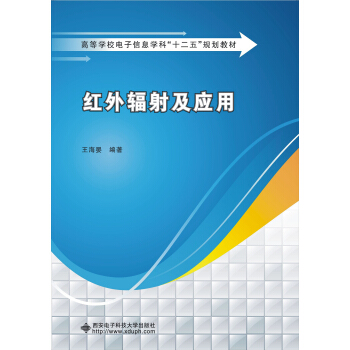

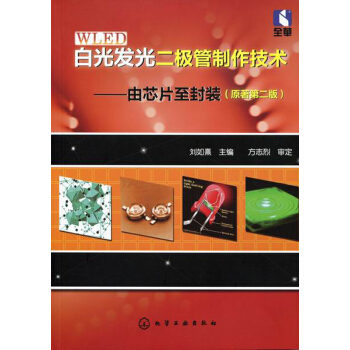
![移动平台UI交互设计与开发/21世纪高等院校移动开发人才培养规划教材(附DVD光盘1张) [Ui Desing and Development on Mobile Platform] pdf epub mobi 电子书 下载](https://pic.tinynews.org/11597576/549377feN1b320f59.jpg)
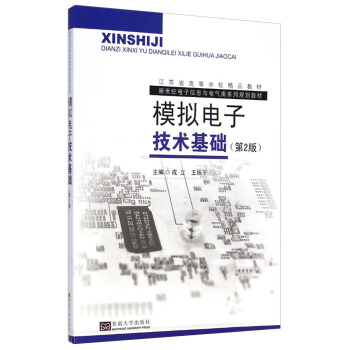
![主动控制中的信号处理 [Signal Processing for Active Control] pdf epub mobi 电子书 下载](https://pic.tinynews.org/11641056/54ceca68N7cb69d40.jpg)

![空间微波技术学术著作丛书:微波固态高功率放大器 [Solid-State Microwave High-Power Amplifiers] pdf epub mobi 电子书 下载](https://pic.tinynews.org/11665552/5525dbffNadff2cd7.jpg)

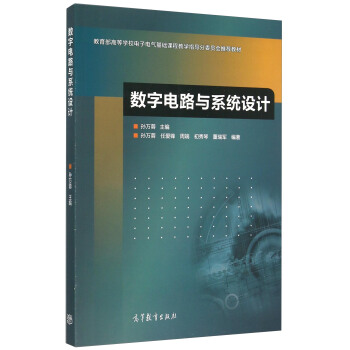
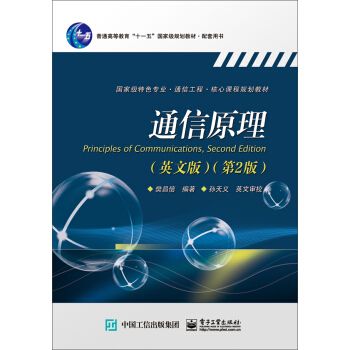
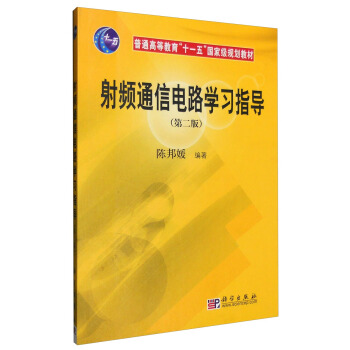

![基于高空平台的宽带通信 [Broadband Communications Via High Altitude Platforms] pdf epub mobi 电子书 下载](https://pic.tinynews.org/11755127/55fbe3eaN07b14060.jpg)

